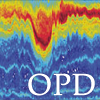|
Dipanjan Chaudhuri Postdoctoral Scholar dchaudhuri@apl.uw.edu Phone 425-518-6308 (cell) |
Research Interests
Physical and Observational Oceanography, OceanographicInstrumentation, Tropical cCyclones, Air-Sea Interaction, Statistical Signal Processing.
Education
Bachelor of Engineering Instrumentation and Electronics Engineering, Jadavpur University, 2009
Masters of Engineering Electrical Engineering, Jadavpur University, 2012
Ph.D. Climate Science, Indian Institute of Science, Bangalore, 2020
|
Publications |
2000-present and while at APL-UW |
Enhanced ocean mixing during the passage of tropical cyclone Falor, D., B. Gayen, D. Sengupta, and D. Chaudhuri, "Enhanced ocean mixing during the passage of tropical cyclone," Geophys. Res. Lett., 51, doi:10.1029/2024GL111925, 2024. |
More Info |
28 Nov 2024 |
|||||||
|
Tropical cyclones are among the most destructive natural disasters. However, lack of detailed observations and the simplifications inherent in operational ocean models, lead to incomplete knowledge of underlying ocean processes. Using high-fidelity large-eddy simulations and moored observations away from the storm track, we show that mutually interacting shear and convective processes, govern the evolving state of the upper ocean. Our simulation agrees well with observed sea surface temperature and sea surface salinity. Shear driven turbulence due to surface wind stress erodes stratification, deepens the ocean mixed layer and transports freshwater into the mixed layer during rain events. Concurrently, surface buoyancy loss also aids in ocean mixing via convective entrainment. The mixing efficiency and the associated eddy diffusivity shows high spatiotemporal variability throughout the water column during cyclone passage. Thus, a better insight into the upper ocean mixing mechanisms is necessary for developing improved mixing parameterizations for tropical cyclone intensity forecasts. |
|||||||||
Near-inertial response of a salinity-stratified ocean Chaudhuri, D., D. Sengupta, E. D'Asaro, J.T. Farrar, M. Mathur, and S. Ranganathan, "Near-inertial response of a salinity-stratified ocean," J. Phys. Oceanogr., 54, 1841-1855, doi:10.1175/JPO-D-23-0173.1, 2024. |
More Info |
1 Sep 2024 |
|||||||
|
We study the near-inertial response of the salinity-stratified north Bay of Bengal to monsoonal wind forcing using 6 years of hourly observations from four moorings. The mean annual energy input from surface winds to near-inertial mixed layer currents is 10–20 kJ m-2, occurring mainly in distinct synoptic "events" from April–September. A total of fifteen events are analyzed: Seven when the ocean is capped by a thin layer of low-salinity river water (fresh) and eight when it is not (salty). The average near-inertial energy input from winds is 40% higher in the fresh cases than in the salty cases. During the fresh events, 1) mixed layer near-inertial motions decay about two times faster and 2) near-inertial kinetic energy below the mixed layer is reduced by at least a factor of three relative to the salty cases. The near-inertial horizontal wavelength was measured for one fresh and one salty event; the fresh was about three times shorter initially. A linear model of near-inertial wave propagation tuned to these data reproduces 2); the thin (10 m) mixed layers during the fresh events excite high modes, which propagate more slowly than the low modes excited by the thicker (40 m) mixed layers in the salty events. The model does not reproduce 1); the rapid decay of the mixed layer inertial motions in the fresh events is not explained by the linear wave propagation at the resolved scales; a different and currently unknown set of processes is likely responsible. |
|||||||||






